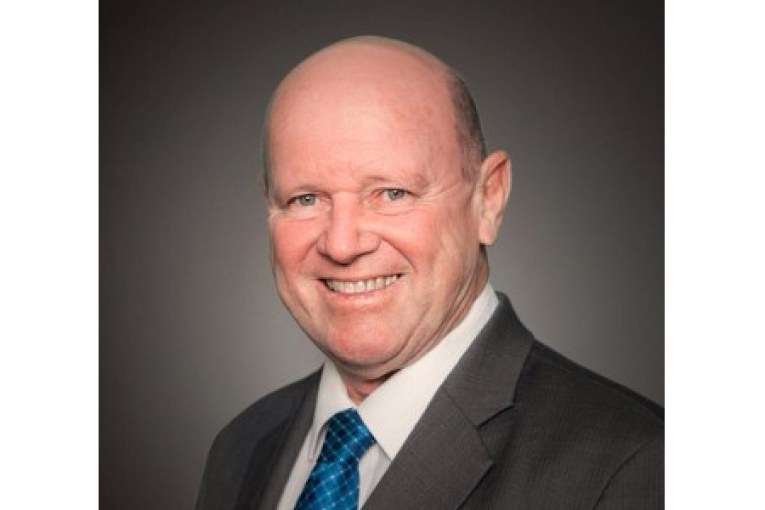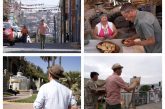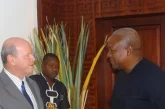
By Alain St.Ange of SAINT ANGE CONSULTANCY
Welcome to Edition #19 of 2018
The Editorial this week highlights Africa’s INDABA 2018 that has come and gone, recent Court Judgment on Compensation for flight delays, and the Ebola epidemic in the northwestern town of Bikoro and surrounding areas in the Democratic Republic of Congo. The editorial also touches on the Judiciary in Seychelles that is following a worrying path and the news that Air Mauritius may resume flights to Seychelles.
Stand Alone articles in this Issue cover:-
1. United Team to Keep Denis Island Clean – parallel operation frees baby turtle entangled in plastic.
2 PONANT, arriving soon in the Indian Ocean.
3. New tourism minister envisions Seychelles as a model for sustainable tourism to the world.
4. Avani Seychelles introducing Asia cuisine nights.
5. 10 stunning photos that show Africa’s beauty.
6. The secret of the world’s largest seed revealed.
7. Tourism’s carbon impact three times larger than estimated.
8. Important judgment of the Court of Justice of the European Union on the compensation of passengers in case of flight delay.
9. One of Europe’s top airlines is in crisis.
10. Turkish Airlines Golf Cup in Mauritius.
11. South Africa’s Tourism Minister Derek Hanekom Official Opening Speech of Africa’s Travel #INDABA2018.
12. Singapore Luxury Brands Summit accelerates digital transformation of luxury brands in Asia Pacific.
13. Maldives: Dare the purifying retreat in the lagoon.
14. International Newswires continue to republish our Report.
Your link:-
edition-19-of-2018?e=b05df7b2bd">https://mailchi.mp/saintange/saint-ange-tourism-report-edition-19-of-2018
Africa’s INDABA 2018 has come and gone
Indaba, the well-known tourism trade fair of Africa, has come and gone, and the chance for Africa to showcase itself to the world has passed. Minister Derek Hanekom said, when he opened this latest Indaba, that 1747 Buyers coming from countries all over the world were present to meet and discuss with the 22 exhibiting African countries, half of the States of Africa working to increase the tourism movement to the continent. Today, Africa pulls just about 5% of the total tourism movement. Showcasing the key USPs of the continent and rewriting the narrative of Brand Africa is the responsibility of each Tourism Board and Tourism Minister of the continent. Visibility for the continent and its islands will not, and cannot, happen by itself; Africa will need to do it by itself and for itself.
Compensation for flight delays
An important judgment of the Court of Justice of the European Union on the compensation of passengers in the case of flight delay brings relief to passengers. The judgment delivered by the Court of Justice of the European Union (“The Court”) on 7 March 2018 handled numerous complex cases (Cases C-274/16, c-447/16 and C-448/16) dealing with the same subject: the compensation of passengers for the delay of a flight and the competent jurisdiction in the case of a dispute which appears between the passenger and the airline responsible for the delay. Passengers are often too vulnerable when faced by long flight delays, especially when the airline management shows a total lack of interest and fails in their responsibility and duty of care.
In conclusion, the Court of Justice of the European Union once again clarifies its case law in the area of “air” disputes. In the light of the Brussels 1 Regulation and this new case-law, the rules established are favorable to passengers and may be unfavorable to airlines. These companies will have to be attentive when they deal with so-called “correspondence” flights. If the companies make a mistake, they might have to defend themselves before a Court in another Member State and that would make their defence more complicated.
Ebola in the northwestern town of Bikoro and surrounding areas in the Democratic Republic of Congo – NOT IN THE 54 STATES OF AFRICA
A problem in a village or region of an African State becomes an Africa-wide problem. The last Ebola epidemic affected the economies of many countries of the African Continent because the press did not take the trouble to say that the epidemic was in that village of that particular country alone, and not in each of Africa’s fifty-four independent countries.
Today, WHO is planning for ‘worst case scenario’ over DRC Ebola outbreak. At least 32 ‘suspected, probable and confirmed’ Ebola cases have been registered in the DRC since April, WHO says. The world has a duty to speak of this latest challenge, but the world must also speak of the northwestern town of Bikoro and the surrounding areas in the DRC and not refer to it as Ebola epidemic in Africa, because it causes confusion in the world of tourism and distant countries from the affected areas also suffer from such adverse misinformation.
The Brand Africa Campaign and now the Africa Tourism Board Association will be in the forefront to defend the misinformation as and when it happens.
Judiciary in Seychelles following a worrying path
It has been confirmed that the Constitutional Appointments Authority (CAA) of Seychelles has initiated proceedings against the sitting Chief Justice, Mathilda Twomey. Judges from foreign lands have been recruited, and are being flown in and duly housed, to hear the complaints levelled against her. The target on the Chief Justice’s back appears to follow the suspension of Justice Karunakaran from office.
The CAA currently has a number of political appointees on its board and this may well set the trend where Judges will change depending on political affiliation, consequently undermining the independence of the three branches of Government, and the doctrine of separation of powers.
From the Maldives we hear:- “Maldives Chief Justice Arrested As President Abdulla Yameen Declares State Of Emergency. The move gives sweeping powers to security forces to arrest and detain suspects, and comes amid a deepening political crisis in Maldives as President Abdulla Yameen defies the Supreme Court”.
In the Philippines the world press reports:- “The Philippines’ highest court on Friday forced out its chief justice, removing a fierce critic of President Rodrigo Duterte and his brutal war against drugs, which has left thousands dead”.
The first woman Chief Justice in Africa was in Lesotho and now the world press are reporting as follows:- “We have received a statement by the Chair of the Southern African Chief Justices Forum – the Hon. Chief Justice Shivute, on plans to remove the Hon. Chief Justice Majara of Lesotho, from office. The SACJF has called on the authorities of the Kingdom of Lesotho to uphold the rule of law and handle the matter in accordance with the principles of natural justice and due process”.
Seychelles appears to be mirroring this concerning trend, prompting a pervasive loss of confidence in Government as a whole. The treatment of the Chief Justice by the State serves as a grim reminder that the Judiciary can be pulled back into line whenever they try to exert their independence from the Executive and the Legislative. Let us learn from the mistakes of the Maldives, the Philippines and Lesotho and allow the Judiciary to manage its branch of Government free from political influences, before Seychelles too is shamed in the international press.
Air Mauritius flights to Seychelles
Many are wondering whether the news that Air Mauritius will commence flights to Seychelles is true. No official notice has been issued as yet, but Air Mauritius has the right to initiate flights to Seychelles when they so wish because of ‘reciprocal agreements’ Seychelles has with Mauritius. With the new announcement that Air Seychelles shall be using only the smaller aircraft on the Mauritius run, the market for more cargo space has opened up. This run has always been a financially profitable one and the interest by Air Mauritius to re-enter the route remains a possibility.
It is important to again today acknowledge all who are diligently re-posting the Saint Ange Tourism Report weekly. Our Report ranges far and wide, from Australia to the Americas, from the Indian Ocean Vanilla islands to Africa & Asian and Greater Europe, with your continued support, which is greatly appreciated. You are helping us to grow from strength to strength with each new Edition.
Enjoy the read,
Alain St.Ange
Saint Ange Consultancy
United Team to Keep Denis Island Clean – parallel operation frees baby turtle entangled in plastic
The staff rallied together on their afternoon of leisure to do a beach clean up around the island. Over 50 team members ranging from housekeeping, gardeners, chefs and administrative staff gladly volunteered to this great cause by removing any plastic or washed up items they found on the beach. The walk took around 90 minutes as they stopped at Belle Etoile, Pointe Mme Guichard, Bois Blanc and more.
Marine debri is harmful to marine life causing injury or death through drowning, injury through entanglement and internal injuries, or starvation following ingestion. Birds, sharks, turtles, dolphins are all innocent victims of marine debris. The team were happy to report that the beaches were generally quite free from plastic and this new task force are keen to keep it this way. Some guests in their chalets saw the team and jumped onboard to also contribute their part with this clean up.
Only recently, A1 Fishing, the sister company of Denis private Island was out on a fishing expedition and something in the blue seas caught their eye. Initially they thought it was just some plastic floating in the ocean, but then they stopped and realised it was a baby turtle entangled in plastic. The crew were quick to rescue it and remove the plastic from her fins. It was such a joy for the team to see her released and swim away freely after this intervention. The video has since had over 160,000 views on Facebook as many have applauded this rare sighting.
(You can view the video here: Seychelles/videos/1493542517441340/">https://web.facebook.com/A1FishingSeychelles/videos/1493542517441340/ ).
PONANT, arriving soon in the Indian Ocean

In the mission to develop tourist arrivals in the Indian Ocean, and especially in the field of cruising, the actions carried out over the last few years have been successful. In 2017, nearly 43 000 cruise visited the Vanilla Islands, representing an increase of almost 25% compared to 2016. These good results will soon be strengthened by the arrival of a new actor
Indeed, the only French shipowner of cruise ships and the world leader in luxury shipping cruises, has announced its arrival in the Indian Ocean from 2018. For 30 years, the company has proposed a new style of cruises, through a unique design of sea voyage aboard yachts of a human size, where passengers access, in a privileged and responsible manner, to Territories preserved under conditions of Comfort and service 5 stars, unique on the market.
Adherent of the Blue Charter of shipowners of France, member of the International Association of Tour Operators in Antarctica (IAATO) and of the Association of Cruise of Expedition in the Arctic (AECO), both working for the safeguarding of the Fauna and flora through the adoption of responsible behaviour, the protection of the marine environment is a priority and makes every effort to minimise its impact on the environment.
For Pascal VIROLEAU, CEO of the Vanilla Islands “the company that is the only French cruise company, will respond to a market segment in strong growth and benefit local players.” For Jean Emmanuel Saveee, president and founder of the PONANT “We have fashioned several unpublished itineraries in the heart of the vanilla islands and we are delighted to allow our passengers to discover all the wealth of these territories.
About PONANT
A world Leader in the luxury expedition and sole French shipowner of cruise ships, PONANT was founded in 1988 by Jean Emmanuel Sauvé and a dozen merchant navy officers. Today it is necessary to be the reference of a new style of luxury cruises through a unique design of the sea voyage combining exceptional itineraries and hotel services 5 stars, aboard luxurious ships of human size. Www.ponant.com
New tourism minister envisions Seychelles as a model for sustainable tourism to the world

The new Minister for Tourism, Civil Aviation, Ports and Marine, Didier Dogley, moved into his new office at Botanical House on Friday May 4, 2018. Formerly the minister of Environment, Energy and Climate Change, he was assigned the new portfolio in a Cabinet reshuffle announced by President Danny Faure on April 26.
Minister Dogley has welcomed his appointment as the new minister responsible for tourism, adding that it provides him with an excellent opportunity to shift his efforts, from taking care of the bedrock of Seychelles tourism — the natural environment — to ensuring that discerning visitors get to discover and experience the true qualities of the Seychelles islands as a world class destination. “In a world where unspoiled natural landscapes and seascapes are becoming a rare asset, Seychelles still offers a wide array of unique sites with breathtaking beauty and exceptional experiences,” he said.
“My vision is to use my knowledge and experience in environment stewardship, coupled with a strong partnership with the trade, to ensure that Seychelles becomes a model for sustainable tourism to the world, enriched by the creole culture and the hospitality of our people,” the minister added.
Didier Dogley was first appointed Minister in February 2015, and assigned the Environment, Energy and Climate Change portfolio. He had previously held high level positions in that same ministry including the post of Director General, Principal Secretary and Special Advisor.
Minister Dogley holds a Bachelor’s Degree in Landscape Architecture, from the Erfurt University of Applied Science in Germany and a Masters Degree in Landscape Management from the University of Reading in the United Kingdom. He also holds a diploma in Management from the Seychelles Institute of Management.
Minister Didier Dogley is married with three children.
Source:- Seychelles Tourism Board
Avani Seychelles introducing Asia cuisine nights
AVANI Seychelles has confirmed that they will bring a festival of Asian flavors from all over Asia, starting from this month of May in their Tamarind restaurant. The Resort`s General Manager Stephane Vilar said that they will be starting with a Sri Lankan talented chef, which will prepare a family style dinner for everyone to sample different dishes.
Tentatively, the Avani Seychelles is planning to serve you Indonesian food next in June!
Stephane Vilar said `We trust you will enjoy this initiative to have different chef every month to the end of the year. Follow us closely, we will so publish the calendar, but in the meantime, we are looking forward to seeing you in May for Sri Lankan feast.
The Resort`s ELITE Club members will benefit from their usual discount!!
10 stunning photos that show Africa’s beauty

(Seychelles – La Digue Anse Source D’Argent)
From West Africa to the Southernmost corners of Africa, these pictures show and prove reasons why you should visit the dark continent. Africa is a large and diverse continent with a range of cultures, landscapes, landmarks and wildlife. From West Africa to the Southernmost corners of Africa, these pictures show and prove reasons why you should visit the dark continent.
1. The Blyde River Canyon, South Africa
The Blyde River Canyon is the third largest canyon in the world with an impressive scenery. The reserve is close to the Kruger National Park and covers 29,000 hectares. It includes natural wonders such as the Bourke’s Luck Potholes, the Three Rondavels, Pinnacle Rock and God’s Window.
The reserve is close to the Kruger National Park and covers 29,000 hectares. (Pinterest) & Nkhata Bay, a vibrant town on the shore of Lake Malawi (Nomad Africa Adventures Tours)
2. The Clear Waters Of Lake Malawi
Nkhata Bay, a vibrant town on the shore of Lake Malawi, is becoming increasingly popular among tourists and is ideal for a beach holiday.
3. Visit The Seychelles Islands
An archipelago of Islands known as Seychelles lies off the coast of East Africa. The islands boast beautiful beaches and coral reefs and are the ultimate tropical paradise.
4. Explore Morocco’s Rich Architecture
Morocco is any architecture’s dream come true. The country is filled with beautiful mosques, impressive houses and souks (marketplaces). The country is distinguished by its Berber, Arabian and European cultural influences.
The Seychelles (La Digue Anse Source D’Argent) & Morocco, the country is distinguished by its Berber, Arabian and European cultural influences (Pinterest)
5. Go Bird Watching Anywhere In Africa
Wherever you find yourself in Africa Nigeria, Cape Town or Madagascar, the continent is teeming with various species of birds.
6. Visit A Game Reserve
Check out the almost extinct Northern rhinos and forest elephants. From the massive Kruger National Park to private reserves, Africa’s game reserves offer guests five-star accommodation to get up close and personal with nature.
7. The Great Mosque’s Of Djenné, Mali
Mali has some of the best examples of Sudano-Sahelian architecture in the world and the mosque of Djenne is no exception.
8. Ride A Camel In Morocco
Camels are a popular mode of transport for locals and tourists can hitch a ride across the desert on the back of a dromedary (Camel).
A typical Moroccan scene features a caravan of camels trekking across the desert landscape.
9. Visit Mount Kilimanjaro
Take a gruelling expedition to Mount Kilimanjaro in Tanzania, one of the world’s greatest peaks.
The peak is at 6,000 meters, and the altitude alone will push your body to the maximum. But the views from the top make it worthwhile.
10. See Tunisia’s blue-and-white buildings
Blue-and-white buildings are seen all over Sidi Abi Said in Aryanah, Tunisia, adding to its Mediterranean feel.
Source:- Pulse Ng / Omotolani Odumade
The secret of the world’s largest seed revealed
The coco de mer palm of the Seychelles is the stuff of legend. Its seeds – the largest and heaviest in the world – were once believed to grow on trees beneath the waves of the Indian Ocean, and to hold great healing powers. Even when it later turned out that the palm grows on dry land, new folklore emerged: To produce this seed, the male and female plants embrace each other on a stormy night, or so a local story goes.
The legends may be just that, but the palm still has unique appeal. “The coco de mer is the only charismatic plant that can rival the giant panda or the tiger,” says Stephen Blackmore at the Royal Botanic Garden Edinburgh, UK. Now the science behind the charismatic palm’s seeds is proving to be just as fascinating.
So how does a plant that grows in poor quality soil on just two islands produce record-breaking seeds that reach half a metre in diameter and can weigh in at around 25 kilograms?
To find out, Christopher Kaiser-Bunbury at the Technical University of Darmstadt in Germany and his colleagues analysed leaf, trunk, flower and nut samples taken from coco de mer palms (Lodoicea maldivica) living on the island of Praslin.
They found that the leaves have only about one-third of the nitrogen and phosphorus concentrations seen in the leaves of other trees and shrubs growing on the Seychelles. Also, before old leaves are shed, the palm efficiently withdraws most of the nutrients from them and recycles them. Investing so little into the foliage means the palm has more to invest in its fruit.
Caring parent
But that’s not the only way the foliage helps fuel fruit growth. The huge, pleated leaves are remarkably effective at funnelling water down the trunk during rain showers. Kaiser-Bunbury and his colleagues showed that this stream of water also picks up any nutrient-rich detritus on the leaves – dead flowers, pollen, bird faeces and more – and washes it down into the soil immediately around the base of the palm. Consequently, the nitrogen and phosphorus concentrations in the soil 20 centimetres from the trunk were at least 50 per cent higher than in the soil just 2 metres away.
Blackmore has seen first-hand how efficiently the leaves channel water – better than some gutters on local buildings, he says. “But to think about it in terms not just of water flow but of nutrients was a very significant leap of thinking and adds much to the understanding of this amazing tree,” Blackmore adds.
Hans Lambers at the University of Western Australia in Crawley, who studies the way plant species have adapted to incredibly low phosphorus levels in soil in south-western Australia, says the nutrient-channelling leaves of the coco de mer are an “entirely different strategy”.
The discovery is linked to another remarkable thing about the palm: it seems to be unique in the plant kingdom in caring for the seedlings after they germinate. Many trees have evolved seeds that travel – on the wind or in the gut of an animal – so that seedlings don’t compete with their parent for the same resources. Stranded on two islands and unable to float, coco de mer seeds usually don’t travel very far.
But the researchers found that the seedlings benefit from growing in the shadow of the parent, because they have access to the more nutritious soil there.
“This is exactly what fascinated my colleagues and me most about Lodoicea,” says Kaiser-Bunbury. “We do not know of another [plant] species that does this.”
Pesky siblings
This still doesn’t explain why the seeds are so large. According to one theory, we have to go back to the dying days of the dinosaurs for an explanation. About 66 million years ago, the ancestral form of the palm probably relied on animals to disperse its relatively large seeds – but it perhaps lost this mechanism when the sliver of continental crust that includes the Seychelles broke away from what is now India, isolating the palm.
This meant the seedlings had to adapt to growing in the gloomy shadows of their parents. Because the large seeds contained a good supply of nutrients, the seedlings were already well equipped to do so, and eventually outcompeted most of the other tree species in the ecosystem: to this day, coco de mer palms are the dominant species in their forests.
Under the unusual conditions of forests dominated by a single species, sibling competition – rather than competition between species – drove evolution, says Kaiser-Bunbury. This meant the palm gradually grew larger and larger seeds to provide seedlings with an even bigger reserve of nutrients to boost chances of surviving against its cousins.
Kevin Burns at the Victoria University of Wellington, New Zealand, studies the way that plants evolve on isolated islands, like the Seychelles, and says that the coco de mer seems to follow a general evolutionary pattern. “Plants tend to evolve large seeds after they colonise isolated islands, and island plant species often have much larger seeds than their mainland relatives,” he says. “Big seeds generally house more competitive seedlings.”
The coco de mer palm hasn’t yielded all of its secrets yet, though. Exactly how the female flowers – the largest of any palm – are pollinated remains a mystery. Blackmore suspects bees are involved, but other researchers think lizards might transfer pollen from the male trees’ 1.5-metre-long, phallic-looking catkins. Local legend, meanwhile, suggests that male trees actually tear themselves from the ground on stormy evenings and lock in a passionate carnal embrace with females. It’s the kind of story that adds to the allure of the palm.
Source:- New Scientist – Journal reference: New Phytologist, DOI: 10.1111/nph.13272


















